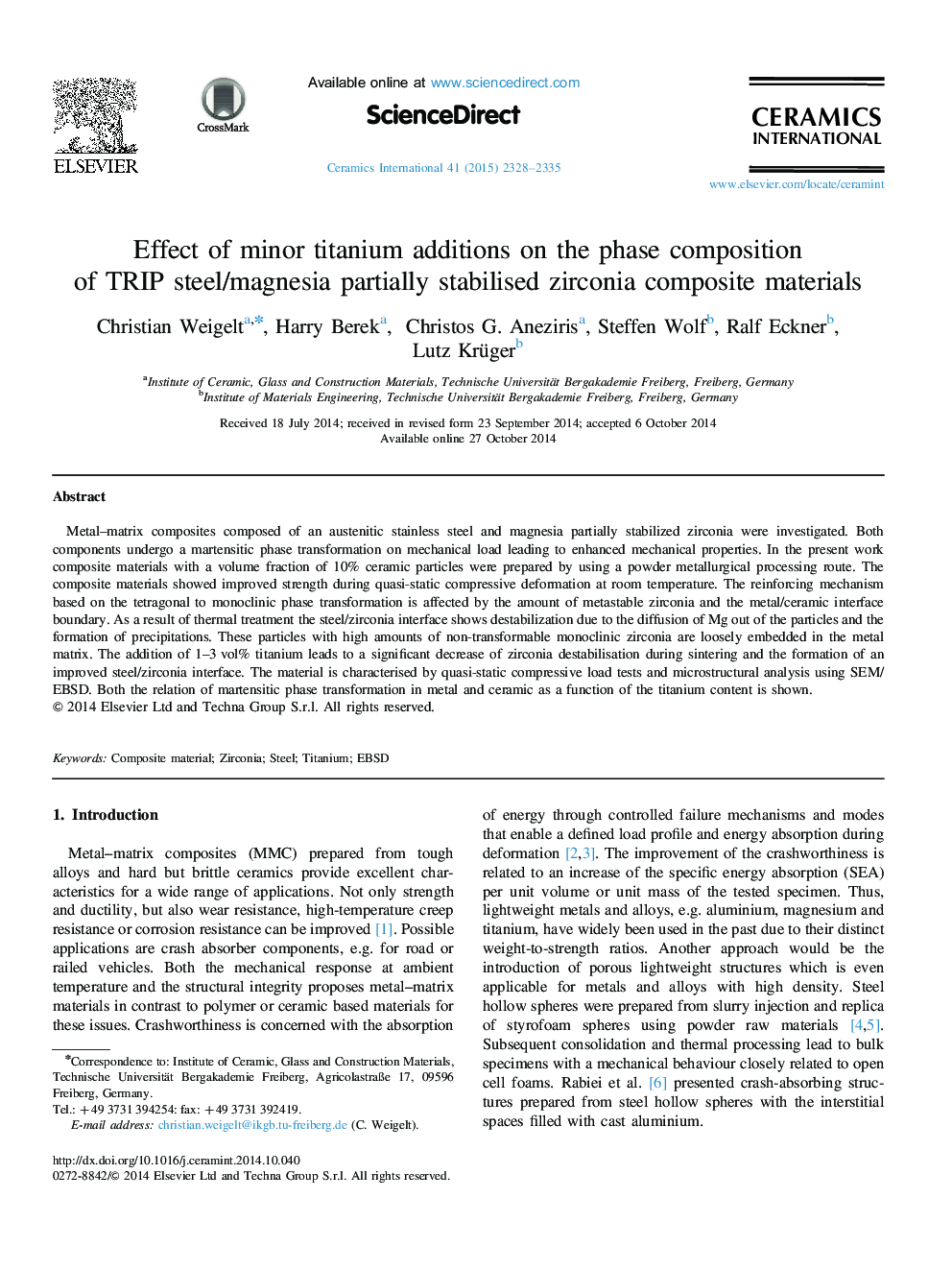| Article ID | Journal | Published Year | Pages | File Type |
|---|---|---|---|---|
| 1459252 | Ceramics International | 2015 | 8 Pages |
Metal–matrix composites composed of an austenitic stainless steel and magnesia partially stabilized zirconia were investigated. Both components undergo a martensitic phase transformation on mechanical load leading to enhanced mechanical properties. In the present work composite materials with a volume fraction of 10% ceramic particles were prepared by using a powder metallurgical processing route. The composite materials showed improved strength during quasi-static compressive deformation at room temperature. The reinforcing mechanism based on the tetragonal to monoclinic phase transformation is affected by the amount of metastable zirconia and the metal/ceramic interface boundary. As a result of thermal treatment the steel/zirconia interface shows destabilization due to the diffusion of Mg out of the particles and the formation of precipitations. These particles with high amounts of non-transformable monoclinic zirconia are loosely embedded in the metal matrix. The addition of 1–3 vol% titanium leads to a significant decrease of zirconia destabilisation during sintering and the formation of an improved steel/zirconia interface. The material is characterised by quasi-static compressive load tests and microstructural analysis using SEM/EBSD. Both the relation of martensitic phase transformation in metal and ceramic as a function of the titanium content is shown.
